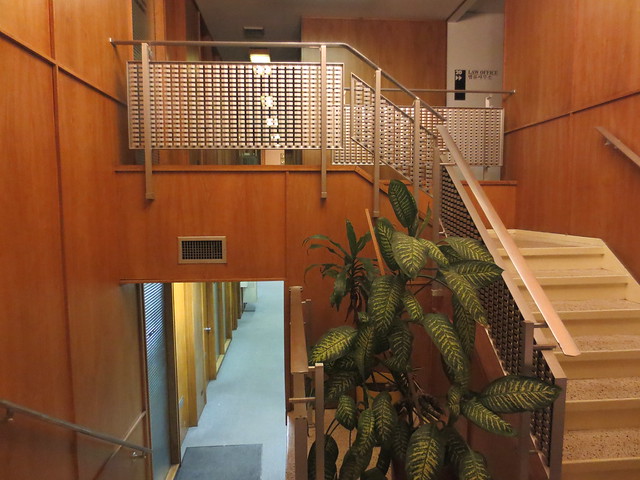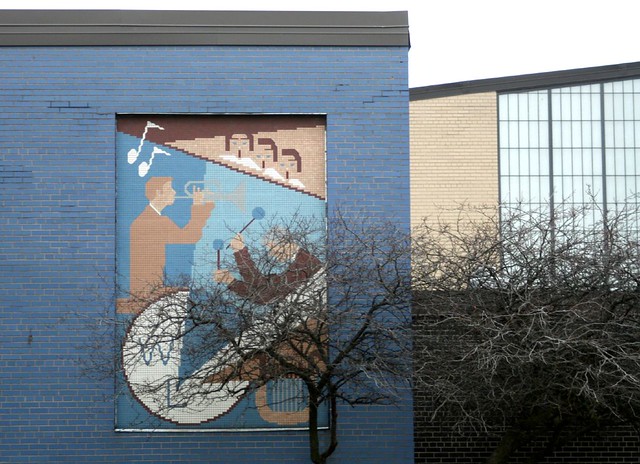Lincoln Avenue plays host to a large number of independent motels as it runs its northwestern course out of Chicago, mostly in a stretch between Foster and Peterson, west of Western Avenue. Informally known as Motel Row, this two-mile length of road once had fourteen motor hotels built after World War II. Nine of them survive today, though for how much longer is anybody’s guess.

Fans of vintage neon signs, Mid-Century design and roadside architecture love these old places. Travelers, by contrast, are not so kind – a quick perusal of guides like Yelp and Yahoo shows a number of scathing reviews by guests who describe deteriorating rooms, mysterious (or not-so-mysterious) stains, aging utilities, and a generally unsavory atmosphere. But weekend travelers are not the only demographic of these establishments – they are commonly used by transients who might stay a few weeks or months. More notoriously, the rooms at many of the motels have played host to any number of unsavory activities, including drug dealing, prostitution, and crimes of assault.
This wasn’t always the case – originally, these motels served families and other road trip travelers, the adventuring pioneers on the new frontier of highways and suburbia. After opening in the 1950s, they settled down for a quiet life for the next few decades. But the pull of the Interstates – begun in the 1960s – was irresistable, and business tumbled. By the 1980s, the names along the strip began to appear regularly in newspaper crime stories. Lincoln’s motel strip was well known as a magnet for crime, a reputation bolstered by hourly rates at some motels. Some fought the decay; others embraced it.
By 1998, the city of Chicago had had enough. It acquired three of the motels via eminent domain – the Spa Motel, Riverside Motel, and Acres Motel – and demolished them in 2000. Their lots became a police station, parkland, and a library, respectively. The survivors banded together and fought back against condemnation procedures, driving the buyout price up and delaying further acquisitions. In 2002, the city of Chicago was actively working to acquire and redevelop seven more of the motels, but it would be four more years before it acquired two more motels and tore them down. Nine remain in operation today.
Though the redevelopment bid has ended, changes are still coming rapidly. Of the great neon signs that once gave these motels their flair, only a few remain today – one standing alongside an empty lot where the Stars Motel once stood. In recent years, the Diplomat has been resurfaced in EFIS, the Summit, the Tip-Top, the Patio and the O-Mi have all lost their neon signs, and the Patio Motel and O-Mi have been repainted without their signature bright colors. The Spa, Riverside and Acres are all long gone; the Stars Motel was demolished around 2006, followed by the Lincoln Motel in 2007.
With enough research, any of these motels could be worth a lengthy post of its own, but I present here a condensed introduction to Lincoln Avenue’s Motel Row. We start south, just north of Foster, and move steadily north.
Diplomat Motel
5230 N. Lincoln

Totally reskinned in recent years, it lost an interesting geometric stainless steel facade, and is now barely recognizable as a Mid-Century design.

Summit Motel
5308 N. Lincoln
Architect: Arthur P. Salk, 1960
The Summit Motel opened in 1962, a date which one could almost identify solely from the green schist stone facade. The “summit” refers to its location at the top of a small rise (what passes for a hill in the tabletop-flat landscape of Chicago.) Architect Salk was also responsible for downtown’s Ohio House Motel.



The Spa Motel
5414 N. Lincoln Avenue

Demolished in 2000 and replaced by a police station, this was a well-known stopover for touring rock bands passing through town. Known guests include Anthrax, Greg Allman, and a long list of more obscure punk and hard rock bands.
The Apache Motel
5535 N. Lincoln Avenue

Open by 1967. Referred to by a Tribune gossip column as “the most infamous of the hot pillow joints”, it’s actually two buildings joined by a pair of suspended walkways.

The sign was rebuilt between 2007 and 2009, by the owner who bought the place in 1987 and has worked hard to distinguish it from the more seedy establishments around it.


Guest House Motel
2600 Bryn Mawr Avenue

Open by 1965. Set just off of Lincoln Ave, the Guest House Motel is a secretive brick box with almost no exterior windows. Cars enter through a tunnel-like opening in the front facade, directed a pair of giant neon arrows (one of which still casts a feeble, barely-visible glow at night), and park in a secluded interior lot. A second driveway opens onto the alley for even more discretion.




O-Mi Motel
5611 N. Lincoln Avenue

Open by 1957, the O-Mi Motel once had an excellent neon sign and a much cooler color scheme. More recent years have seen it sadly toned down, and the original sign has been replaced by a dull plastic backlit one.

The Acres Motel
5600 N. Lincoln

Demolished in 2000 and replaced by a library.
Lincoln Motel
5900 N. Lincoln Avenue

Built in 1958, the Lincoln Motel came in amid a court battle over zoning laws adopted just as construction was beginning. It went out much the same way fifty years later. After a four-year court fight, the Lincoln Motel was condemned by the city and demolished in 2007. The planned developer backed out the next year, and the lot remains empty today.
Villa Motel
5952 N. Lincoln Avenue


Open by 1962. With its angled windows, angled roofline, and angled columns, this is easily the most space-age futuristic building on Motel Row. The current sign retains some space-age styling, but it’s all plastic. The original sign was far more elaborate and eye-catching. Now operated as the Lincoln Inn Motel.


Compare the above view with a 1992 image on Flickr.
Riverside Motel
5954 N. Virginia Avenue

Demolished in 2000. The site now serves as an expanded entryway to Legion Park, which runs along the north branch of the Chicago River.
Tip Top Motel
6060 N. Lincoln Avenue


Open by 1959. Now the River Park Motel & Suites. The little entrance arrow sign is among the very few remaining neon signs on the strip.

Rio Motel
6155 N. Jersey (at Lincoln)
Open by 1957. The Rio and the Tip-Top are both broad, gentle curves in plan, and literally sit back-to-back, their rear brick walls touching.



Stars Motel
6100 N. Lincoln Avenue

Built in 1956. Rather famously, this motel at the corner of Lincoln and Peterson was demolished in 2006, leaving only the neon sign which was subsequently auctioned off on eBay. The bottom fell out of the economy before anything further could happen. Plans for a 4-story condo building named “Village Center” went nowhere, and the sign – never claimed by the winning bidder – has presided over a vacant lot ever since.


The latest sign to pop up on the empty lot announces that the lot will, this summer, function as an outpost of the Peterson Community Garden – which is usually a neighborhood’s desperate plea for a vacant lot to please, please, please just go away.
Patio Motel
6250 N. Lincoln Avenue

Likely built in 1955, open by 1957, the Patio featured a delightful orange and aqua color scheme and a glassy entrance lobby. It retained its vintage style in 2007:

But has been toned down since then:

The bright colors disappeared in 2008, the sign was removed in 2009, and the motel is now the North Park Inn, with yet another color scheme.

The sign has been chopped off; only the former letterboard remains, now with a backlit plastic sign:







































































































































